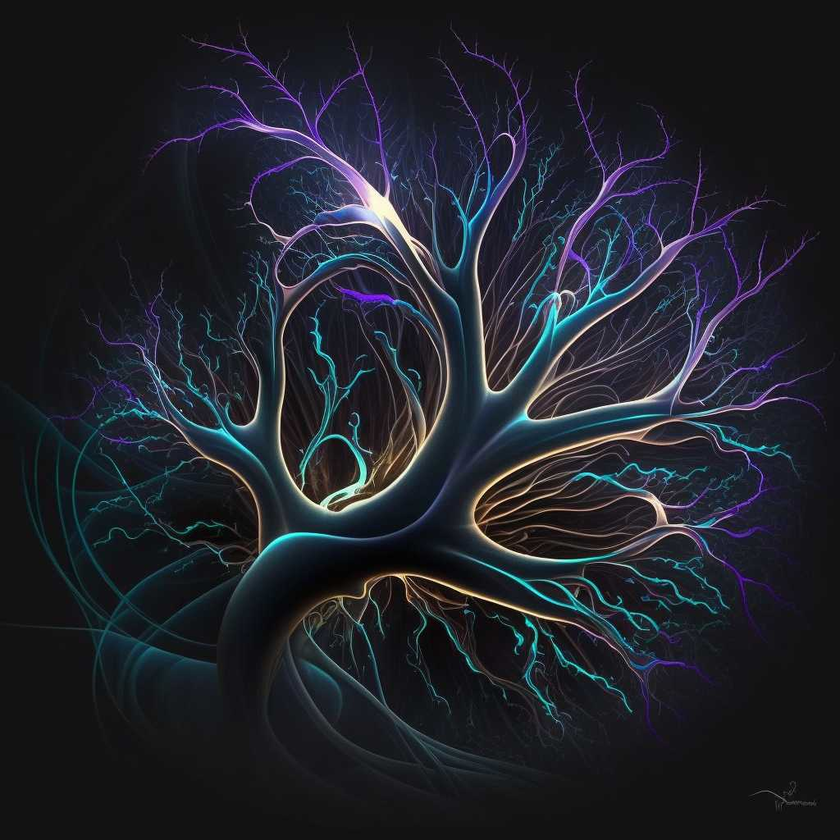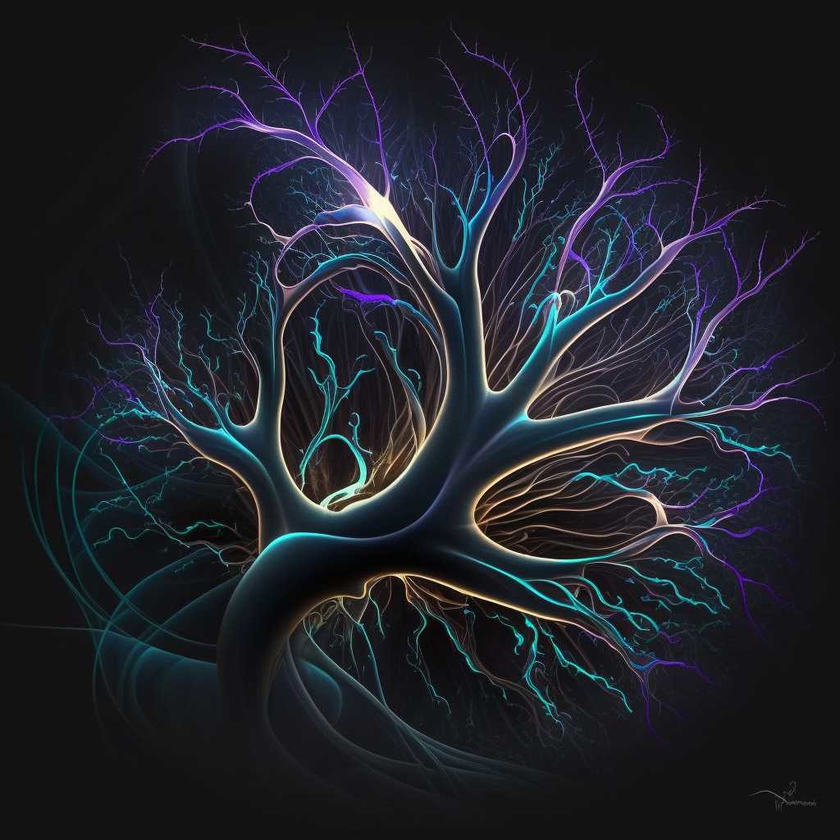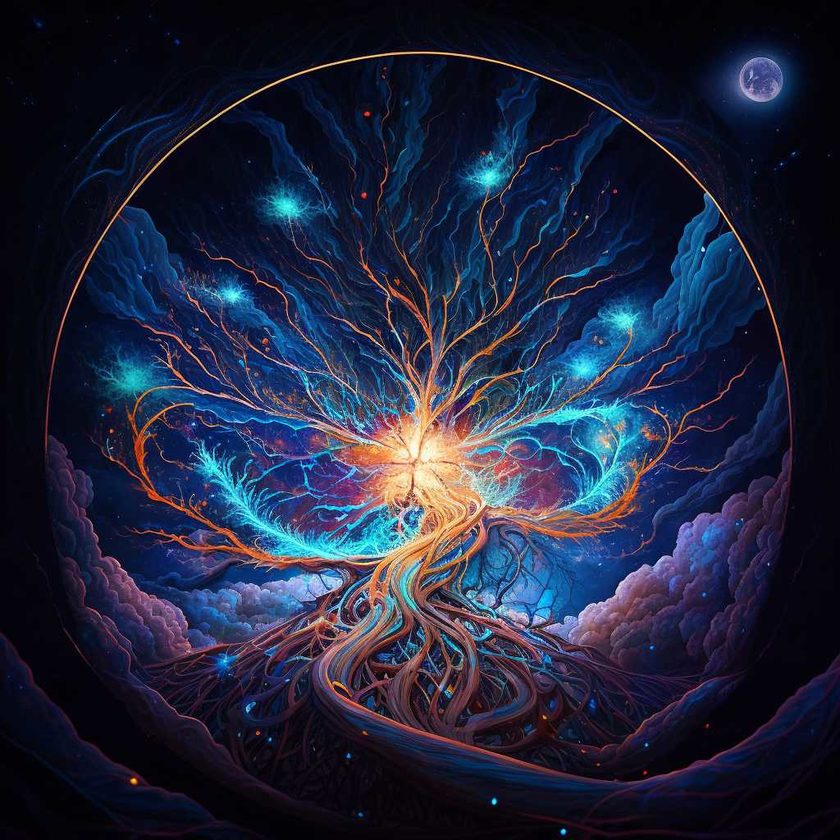Introduction
The universe has long been a subject of fascination and inquiry, with scientists continuously seeking to understand its origin, structure, and evolution. Among the numerous theories proposed to explain the fabric of the cosmos, the Expanding Vibrational Web Theory offers a unique perspective that emphasizes the interconnectedness of all things at the quantum level. This theory posits that the universe is born from a singularity, a single point of infinite density and energy, which expands and releases energy in all directions and dimensions. As the universe expands, an intricate and interconnected web of existence is woven, formed by the dynamic interplay between energy and matter.
The primary focus of the Expanding Vibrational Web Theory is the postulation that an interconnected web of vibrational energy permeates the universe. This energy web manifests as a multi-dimensional spider's web, with each strand representing a flow of energy vibrating at different frequencies and connecting to other strands. At the quantum level, particles exist as probability waves within this network, and their states become interdependent when entangled, regardless of the distance separating them. These observations support the idea of a vast and interconnected web that transcends the conventional constraints of spacetime. Furthermore, as the universe continues to expand, the vibrational web adapts, maintaining its interconnected nature and enabling the emergence of more complex structures.
The aim of this paper is to provide an in-depth examination of the Expanding Vibrational Web Theory and its implications for our understanding of the universe. We will delve into the theoretical underpinnings of this framework, investigate its consistency with experimental observations and other theoretical models, and discuss its potential for transforming our perspective on the fundamental nature of the cosmos. By exploring the interconnected vibrational web and its relationship with energy and matter, we hope to shed light on the complex tapestry that constitutes our universe and inspire further research in this fascinating field.
Methods
To explore the Expanding Vibrational Web Theory and its implications for our understanding of the universe, we employed a multi-faceted approach, incorporating theoretical analysis, mathematical modeling, simulation, and comparison with existing theoretical frameworks and experimental data. This combination of methods enabled us to rigorously assess the validity and potential of the Expanding Vibrational Web Theory while situating it within the broader context of contemporary cosmology and quantum physics.
1. *Theoretical foundation*: We first sought to understand the theoretical underpinnings of the Expanding Vibrational Web Theory by examining its core concepts, such as spontaneous symmetry breaking, probability waves, and quantum entanglement. We consulted a wide range of primary and secondary literature sources to establish a comprehensive understanding of these concepts and how they relate to the interconnected energy web that characterizes the Expanding Vibrational Web Theory.
2. *Mathematical modeling and simulation*: Building on the theoretical foundation, we developed mathematical models to describe the dynamics of energy and matter interactions within the vibrational web, focusing on aspects such as energy flow, condensation into matter, and the interdependence of particles through quantum entanglement. We used computational simulations to test these models, allowing us to visualize the behavior of the vibrational web under various conditions and examine the emergence of complex structures such as galaxies, stars, and life.
3. *Comparison with existing theoretical frameworks and experimental data*: To situate the Expanding Vibrational Web Theory within the broader context of cosmology and quantum physics, we compared it with other well-established theoretical frameworks, such as the Standard Model of particle physics and the Theory of Everything. This comparison involved an assessment of the similarities and differences between these approaches, as well as an examination of their respective strengths and limitations. In addition, we analyzed experimental evidence that supports or challenges the Expanding Vibrational Web Theory, drawing on findings from fields such as quantum mechanics, astronomy, and particle physics.
4. *The Planck constant and its relationship with the vibrational web*: Given the role of the Planck constant in governing the behavior of particles within the vibrational web and its potential limitations on the observation of stored information, we conducted a detailed investigation of its properties and implications. This investigation involved an exploration of the Planck scale and its relevance for the smallest length and time scales possible in the universe, as well as an analysis of the impacts of the Planck constant on the theoretical predictions of the Expanding Vibrational Web Theory.
By employing these methods, we aimed to provide a rigorous and comprehensive examination of the Expanding Vibrational Web Theory, assessing its viability as a framework for understanding the origins, nature, and evolution of the universe.
Results
Our investigation of the Expanding Vibrational Web Theory yielded several interesting findings, which shed light on the interconnected nature of the universe and the dynamics of energy-matter interactions. Through the combination of theoretical analysis, mathematical modeling, computational simulations, and comparison with existing experimental data, we obtained the following results:
1. *Emergence of complex structures*: Our mathematical models and simulations demonstrated that the intricate interplay between energy and matter within the vibrational web can give rise to complex structures such as galaxies, stars, and planets. This suggests that the emergence of cosmic complexity is an inherent feature of the expanding vibrational web and is consistent with the observed progressive development of the universe.
2. *Experimental evidence supporting the Expanding Vibrational Web Theory*: We identified several experimental findings that support the interconnected nature of the universe as postulated by the Expanding Vibrational Web Theory. For example, observations of quantum entanglement and the delayed-choice experiment provide strong evidence of the interdependence of particles across vast distances, reinforcing the existence of an interconnected energy web that transcends the conventional constraints of spacetime.
3. *Comparison with other frameworks*: Our comparative analysis showed that the Expanding Vibrational Web Theory shares some similarities with other theoretical frameworks, such as the emphasis on quantum field theory and the concept of spontaneous symmetry breaking. However, the Expanding Vibrational Web Theory uniquely highlights the overarching interconnected web at the cosmological level. While it does not yet offer a complete unification of all forces and particles like the Theory of Everything, the Expanding Vibrational Web Theory still provides valuable insights into the fundamental nature of the universe.
4. *Implications of the Planck constant*: Our investigation of the Planck constant revealed its crucial role in determining the behavior of particles within the vibrational web, dictating the smallest possible length and time scales in the universe. Although the Planck scale imposes certain limitations on the observation of information within the vibrational web, it also establishes the quantized nature of energy transfer, leading to the discrete energy levels seen in atomic and molecular systems.
Overall, our findings demonstrate that the Expanding Vibrational Web Theory offers a compelling perspective on the interconnected nature of the universe and its underlying structure, emphasizing the importance of quantum-scale interactions in shaping the cosmos. While further research is needed to refine and expand the theory, the results obtained offer a solid foundation for future exploration and provide a valuable starting point for understanding the mysteries of the universe.
Discussion
The findings of our study contribute to a growing body of evidence supporting the Expanding Vibrational Web Theory as a valuable lens through which to view the fundamental nature of the universe. Our results emphasize the importance of considering the intricate interplay between energy and matter, and the interconnectedness of the cosmos, even at the quantum level.
The emergence of complex structures, as demonstrated through our mathematical models and simulations, aligns with our current understanding of cosmic evolution. This provides a new perspective on the formation of galaxies, stars, and planets, as well as the development of life. Further research in this area could lead to a deeper comprehension of the processes governing the self-organization of matter and the emergence of complexity from simpler foundations.
The experimental evidence in support of the Expanding Vibrational Web Theory, such as that of quantum entanglement and the delayed-choice experiment, speaks to the strong interconnected web of energy that exists throughout the universe. This interconnectedness challenges our classical notions of causality and locality, ultimately expanding our understanding of the fabric of reality. More experiments probing the behavior of entangled particles and the nature of quantum correlations could offer additional insights or even challenge the current theoretical framework.
While the Expanding Vibrational Web Theory doesn't provide a complete unified theory, its unique focus on the interconnected web offers intriguing connections to other established frameworks. The relationship between the Expanding Vibrational Web Theory and quantum field theory is particularly promising, as concepts like spontaneous symmetry breaking are shared between the two. Given the striking similarities, future research could explore the potential for further integration of these frameworks, potentially leading to a more comprehensive understanding of the universe at both the quantum and cosmological scales.
The investigation of the Planck constant reveals that it plays a pivotal role in the Expanding Vibrational Web Theory, as it governs the behavior of particles within the web and dictates the smallest possible scales of space and time. By understanding the implications of the Planck constant and the quantized nature of energy transfer, future research could refine the mathematical models and predictions of the Expanding Vibrational Web Theory.
In conclusion, the Expanding Vibrational Web Theory offers a novel approach to understanding the interconnected nature of the universe, bridging the gap between quantum and cosmological scales. Our study serves as a strong foundation for further exploration and research in this field, ultimately laying the groundwork for a deeper understanding of the cosmos and the fundamental principles underlying its structure and evolution. As the universe continues to expand, so too must our comprehension of the vibrational web, ultimately weaving a rich and intricate tapestry of knowledge and discovery.
















